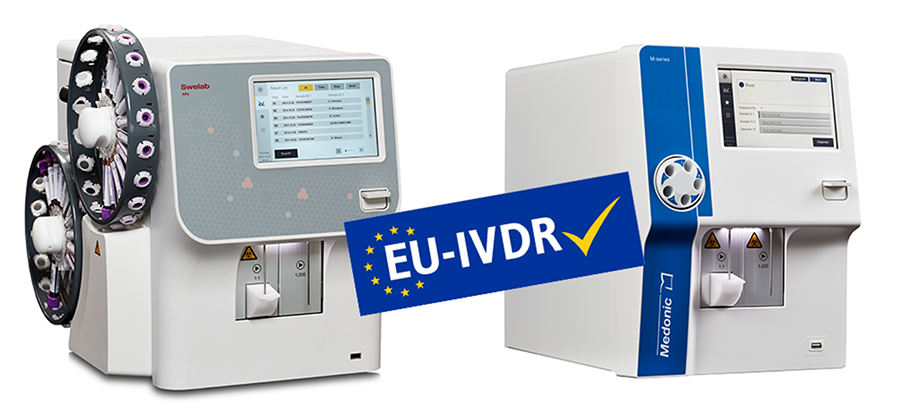Automated hematology analysis is technically complex. For a complete blood count (CBC), multiple methods are run in parallel to obtain results for a range of parameters. As these results form the basis for decisions on numerous medical conditions, measurement quality and instrument uptime are essential features of a hematology analyzer in clinical use.
The fluidic system is the heart of the analyzer, and it plays a pivotal role in analyzer performance. Commercially available analyzers employ different design solutions for their fluidic systems, each with its advantages and disadvantages. A thorough understanding of flow dynamics and control of pressurized fluids is critical when designing the fluidic system.
Piston-driven flow control versus flow control using air and vacuum pumps
One common approach to fluidic control is piston-driven flow. This method offers the benefit of lower liquid circuit volume and reduced reagent consumption, however, comes with the trade-off of typically requiring daily cleaning to prevent clogging by protein buildup within the system.
In contrast, flow control using air and vacuum pumps stands out for its robustness. This method is less prone to leakage and reduces the need for moving mechanical parts and other components that increases maintenance requirements, ultimately enhancing instrument uptime.
The importance of precise sample aspiration
The aspiration method employed is a critical component of hematology analysis that significantly impacts measurement quality. Precise sample aspiration is fundamental to obtaining accurate and reliable results. Two primary aspiration methods are commonly used, each with its own advantages and considerations.
A micro-pipette aspiration method has the advantage of a small sample volume. However, even a slight decrease in the sample volume can have a substantial impact on the accuracy of the results. Additionally, the method requires that the micro-dilutor is completely sealed to avoid leakage from the syringe. The method also requires an aspiration module that moves the sample to an open mixing cup through an X-Y moving assembly, a solution that might increase the maintenance needs.
Although the aspirated volume is greater with a shear valve, the method excels in robustness. Shear valve aspiration is controlled by a blood sensor and a precise volume is cut and brought to a closed mixing chamber using diluent reagent. Cutting the same precise volume for each measurement, the analyzer is not required to be as frequently calibrated. Additionally, allowing the use of a closed mixing cup reduces the maintenance needs by being less susceptible to entry of dust and other impurities.
Mats Johansson, Senior Systems Engineer at Boule Diagnostics, shares some insights into the analyzer design:
“At Boule, we know what problems can arise from transporting and mixing blood and reagents. E.g. transport delays caused by trapped air in the system and have taken them into account when developing the Boule fluidic system. In our hematology analyzers, the flow is gently controlled by air and vacuum pumps together with sensors to provide the robustness needed in decentralized hematology analysis, where service can be at a far distance. Boule proprietary bi-stable pinch valves are designed to prevent protein buildup and maintain the integrity of the tubing. Shear valve aspiration is employed, not only for consistency in reported results, but also to omit the need for moving parts in the fluidic system. “

Mats Johansson, Senior Systems Engineer at Boule Diagnostics
Johannes Pachler, Managing Director, Leupamed Medizintechnik GmbH, Austria, shares his observations:
“We have been the Boule dealer in Austria for more than 30 years, responsible for sales and service of Swelab Alfa and Medonic M-Series analyzers. We see that one of the major strengths of these instruments is their superior fluidic system.”

Johannes Pachler, Managing Director, Leupamed Medizintechnik GmbH
The difference between hematology analyzers may not be apparent simply by comparing technical or performance specifications, nor may it be revealed during installation, operation, and performance qualification (IQ/OQ/PQ). It is therefore advisable to get basic knowledge about the strengths and weaknesses of different design solution before selecting an automated hematology system for clinical use.
At Boule, we are good at flow dynamics, and our analyzers are designed to provides laboratories with efficient tools for hematology analysis.

Swelab Alfa Plus and Medonic M32 hematology analyzers




